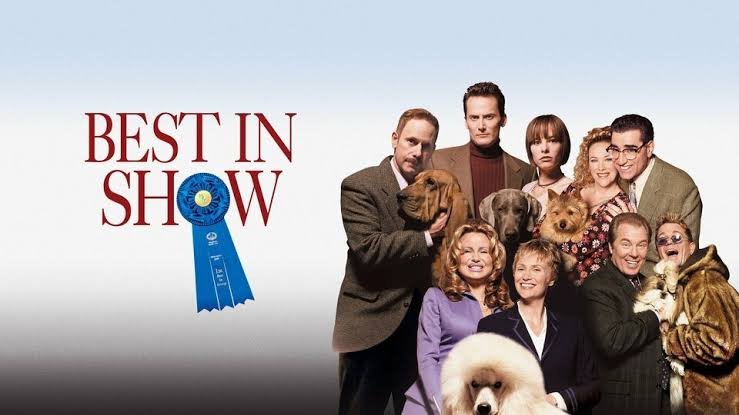Best in Show for One NYT
Introduction
In the world of dog shows, the title “Best in Show” holds immense prestige. For one night, enthusiasts and casual viewers alike turn their attention to the New York Times coverage of this grand event. This article delves into the fascinating details of what makes the “Best in Show for One NYT” a must-watch for dog lovers.
The Significance of “Best in Show”
The title “Best in Show” is the pinnacle of achievement in dog competitions. Winning this accolade means a dog has surpassed numerous competitors, excelling in conformation to breed standards, temperament, and overall presentation.
History of Dog Shows
Dog shows have a rich history dating back to the late 19th century. They began as a way for breeders to compare their dogs against the standards of perfection set by kennel clubs. Over time, these events grew in popularity, leading to the prestigious shows we see today.
New York Times’ Role in Dog Show Coverage
The New York Times has long been a reputable source for comprehensive coverage of significant events, including dog shows. Their detailed reporting and expert analysis provide readers with insights into the competition, the dogs, and the judges.
The Judging Criteria
To win “Best in Show,” dogs must meet rigorous standards. Judges evaluate various aspects, including the dog’s gait, physique, and adherence to breed characteristics. Each breed has a specific set of criteria, making the competition both challenging and exciting.
Top Breeds That Have Won “Best in Show”
Certain breeds have historically excelled in dog shows. Breeds like the Poodle, the Fox Terrier, and the Beagle often dominate due to their exemplary traits and presentation. Understanding these breeds gives viewers a better appreciation of the competition’s nuances.
Preparation for the Show
Preparation for a dog show is an extensive process. It involves rigorous training, grooming, and diet regulation. Handlers work tirelessly to ensure their dogs are in peak condition, ready to impress the judges and the audience.
Training Regimens for Show Dogs
Training a show dog requires patience and consistency. From basic obedience to advanced tricks, handlers use positive reinforcement to teach their dogs the necessary skills. This training is crucial for a flawless performance in the ring.
Grooming Standards
Grooming is a critical aspect of dog shows. Each breed has unique grooming requirements, and handlers must ensure their dogs look impeccable. This includes bathing, trimming, and sometimes even styling the dog’s coat to meet breed standards.
The Role of Handlers
Handlers play a significant role in dog shows. They must showcase the dog’s best qualities, maneuvering them gracefully around the ring. A skilled handler can make a substantial difference in a dog’s performance and overall presentation.
Audience Engagement
Dog shows attract a diverse audience. From die-hard enthusiasts to curious onlookers, the energy and excitement are palpable. The New York Times’ coverage captures this atmosphere, bringing the event to life for readers.
The Experience of Attending a Dog Show
Attending a dog show is a unique experience. The sight of well-trained dogs, the sound of excited spectators, and the overall ambiance make it a memorable event. For many, it’s a chance to see their favorite breeds up close and personal.
Impact of Winning “Best in Show”
Winning “Best in Show” can significantly impact a dog’s life. It opens doors for breeding opportunities, sponsorships, and appearances in advertisements. For the owners and handlers, it’s a proud moment of recognition for their hard work.
FAQs
What is the “Best in Show” title? The “Best in Show” title is awarded to the top dog in a dog show, recognizing the best overall performance across all breeds.
How are dogs judged in these competitions? Dogs are judged based on their adherence to breed standards, physical condition, gait, and overall presentation.
Which breeds often win “Best in Show”? Breeds like the Poodle, Fox Terrier, and Beagle frequently win due to their exemplary traits and grooming.
What role does the handler play in the competition? Handlers present the dog to the judges, highlighting its best qualities through skillful maneuvering and training.
How does winning “Best in Show” affect a dog’s career? Winning can lead to increased breeding opportunities, sponsorship deals, and public appearances, enhancing the dog’s profile.
Why is New York Times’ coverage of the event significant? The New York Times provides detailed and expert analysis, offering readers comprehensive insights into the event and its highlights.
Conclusion
The “Best in Show for One NYT” is a captivating event that showcases the best in canine excellence. From the rigorous judging criteria to the thrill of the competition, it’s an experience that enthralls dog lovers and casual viewers alike. The New York Times’ detailed coverage ensures that even those who can’t attend in person can appreciate the grandeur of this prestigious event.

